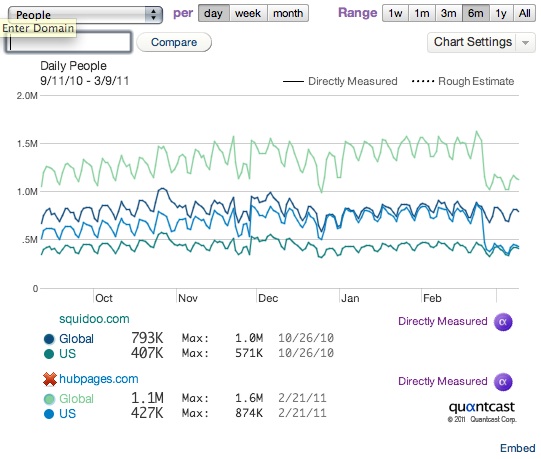I’ve talked about making search results sexy before. By this I mean tweaking your lenses so that whatever shows up in Google or other search engines tempts your target audience to click on YOUR webpage, instead of all the other search results that come up.
This is vital. Getting your webpage to appear in search engine results is important. But what you want is those clicks! Whatever appears in Google is your billboard, your front door, your commercial that will get people off the street and into your article. Your search engine listing is the number one way to attract search traffic — forget backlinks! — so you want it to look its best.
Here’s an example:

Search results for ‘Free Web Graphics‘ on Google
Suppose I’ve landed the #4 spot for the search “Free Web Graphics.” (Actually, I haven’t; that’s Google’s personalized results which tend to favor Squidoo in my case.) While searchers tend to click the TOP results on a page, a photo can draw the eye down. My photo is more appealing than the one above it, simply because of the contrast and vibrance of the colors (mine is a professional portrait). Also, my snippet’s excerpt sounds a lot more friendly — doesn’t it? — while still showing that I’m covering the search query.
So, let’s take Google’s search results step by step.
1) Title: You know the drill: include your keyword phrase AND something to engage your audience.
2) Breadcrumbs (green links in above screencap): make sure the category you file your article under suits your keyword, if you possibly can.
3) Photo and Google Authorship links.
Set up Google Authorship if you haven’t. Once Google has crawled your lenses with authorship included, it will often place your Google Profile photo in search results for your articles. The photo can draw the searcher’s eye — or repel them if your photo is off-putting.
See the bottom part of my Is Your Profile Picture a Zombie? article for tips on how to tweak your profile photo. Or see this recent SEOMoz post, which reminded me of this topic: How Optimizing My Google Profile Pic Increased Traffic 35%. Take a look at the examples he tried and discarded. That will give you more ideas about what works!
4) Google snippet (excerpt) from your lens, usually 156 characters.
I’ve covered this before, but just in case you missed it:
Google will give a short excerpt: either the first sentence of your post/article/lens, or the first place where the searcher’s query shows up on the page. You can’t optimize every single snippet on the page, but you can optimize the first sentence plus the place where your top keyword (or the 2-3 most common searches) appears. Do this by Googling for your article — assuming it’s already been indexed — and see what snippet comes up.
Tweak it. Use SEOMofo’s Snippet Optimizer to rewrite it so that the excerpt accomplishes two things: (1) shows that the page covers the search query and (2) show that the page is well-written and competent. (This means proofreading, crisp language). If possible, make the snippet engaging, intriguing, fun, depending on your topic. Be un-boring.





